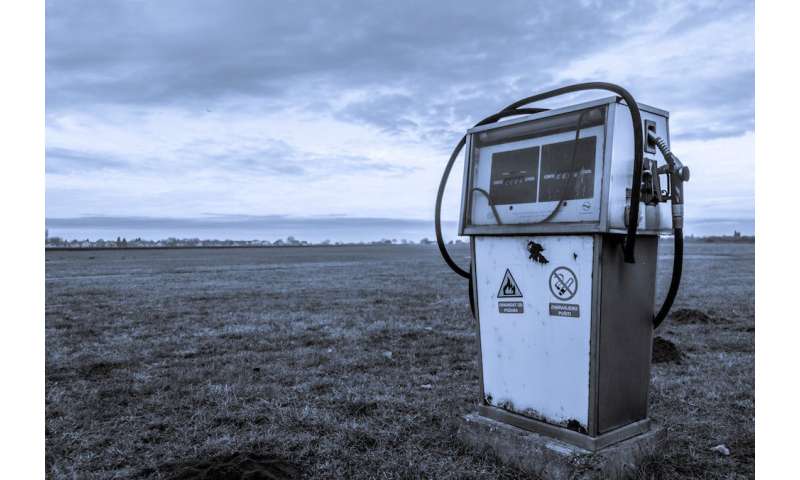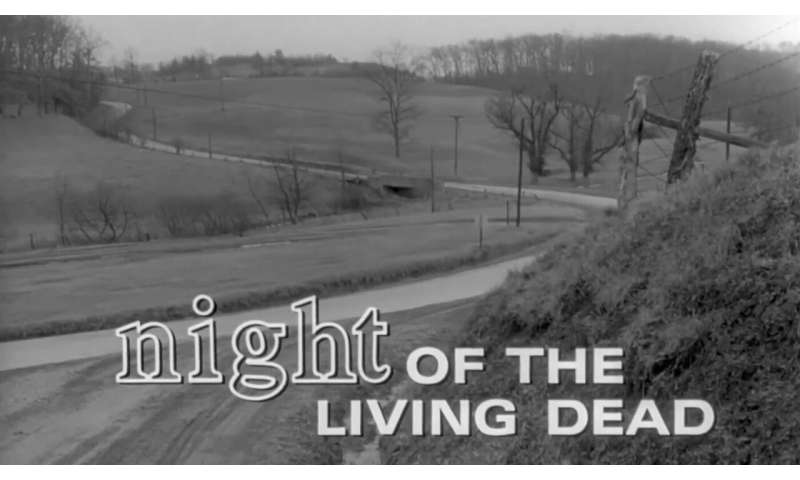CAPITALISM; THE MODERN BODY SNATCHER
CAPITALISM AND REPRODUCTION
Mariarosa Dalla Costa
The most recent and monstrous twist to this campaign of extinction comes from the extreme example of resistance offered by those who sell parts of their body, useless container for a labour-power that is no longer saleable. (In Italy, where the sale of organs is banned, press and TV reports in 1993-94 mentioned instances in which people said explicitly that they were willing to break the ban in exchange for money or a job.) For those impoverished and expropriated by capitalist expansion in the Third World, however, this is already a common way for obtaining money. Press reports mention criminal organisations which traffic in organs and supply perfectly legal terminals such as clinics. This trade flourishes thanks to kidnapping, often of women and children, and false adoption. An enquiry was recently opened at the European Parliament on the issue (La Repubblica, September 16 1993), and various women's networks are trying to throw light on and block these crimes. But this is where capitalist development, founded on the negation of the individual's value, celebrates its triumph; the individual owner of redundant or, in any case, superfluous labour-power is literally cut to pieces in order to re-build the bodies of those who can pay for the right to live to the criminal or non-criminal sectors of capital which profit from it.
Medical Cadaver Scandal at UCLA
California university proposes better tracking of donated bodies
By MICHELLE LOCKE
Associated Press
Saturday, February 5, 2005 - Page A14
BERKELEY, CALIF. -- Shaken by scandals involving the black-market sale of body parts, University of California officials are considering inserting supermarket-style bar codes or radio frequency devices in cadavers to keep track of them.
Every year, thousands of bodies are donated to U.S. tissue banks and medical schools. Skin, bone and other tissue are often used in transplants. New medical treatments and safety equipment such as bicycle helmets are tested on various body parts. And cadavers are used to teach medical students surgical skills and anatomy.
But there is also a lucrative underground trade in corpses and body parts, despite federal laws against the sale of organs and tissue.
"There's more regulations that cover a shipment of oranges coming into California than there is [for] a shipment of human knees that are going from a body-parts broker in one state to Las Vegas," said Dr. Todd Olson, director of anatomical donations at Albert Einstein Medical School of New York.
At UCLA, the willed-body program was suspended by court order last spring after the director and another person were arrested in an investigation into the selling of body parts for profit. The case is still under investigation and no charges have been filed.
In 1996, donors' families sued the university, charging that the program had illegally disposed of thousands of bodies by cremating them along with dead lab animals and fetuses and dumping the ashes in the trash.
In 1999, the director of the UCLA Irvine program was fired after being accused of selling spines to a Phoenix hospital. The university was also unable to account for hundreds of willed bodies. The director denied any wrongdoing and was never prosecuted.
After the latest scandal, some people who had agreed to leave their bodies to science withdrew their offers.
In response, UCLA has proposed a series of changes, some of which are already in place. They include a better records system, electronic locks and surveillance cameras.
Officials are also considering putting bar codes or radio frequency devices in cadavers that could be read by someone walking past the body with a handheld device. Radio frequency identification, or RFID, tags already are used by cars passing through automated toll plazas.
The university's Board of Regents is expected to review the plan this spring. Also, UCLA officials will decide in March whether to ask a judge overseeing lawsuits filed by donors' relatives for permission to reopen UCLA's 55-year-old willed-body program, which was getting about 175 donated bodies a year before it was suspended.
Mike Arias, a lawyer for family members who have sued UCLA, greeted the proposed measures with "somewhat guarded optimism."
Still, Mr. Arias said he hopes the changes succeed and the UCLA program resumes because it "serves too big of a public service [to be scrapped]."
THE PROBLEM OF ORGAN TRAFFICKING
By Eugen Tomiuc
The Albanian and Italian press have published articles from time to time regarding trafficking in teenage Albanian boys to Italy and beyond for use as prostitutes or possibly for the sale of their organs. Typically, the boys and their families appear to be tricked by a trusted person who offers to take the youths to Italy or elsewhere in the EU with the promise of a good education or reunion with relatives already working abroad.
The Council of Europe is calling for a common European strategy in fighting against trafficking in human organs. Its report on the issue, presented on 25 June in the Council's Parliamentary Assembly, says kidney trafficking has become a hugely profitable business for organized crime. People in impoverished Eastern European countries such as Moldova and Ukraine are the most common victims of the illicit trade, which the council calls an attack against human dignity. The report says combating poverty in Eastern Europe is the best way to curb organ trafficking, and urges improved cooperation between rich Western countries and their Eastern neighbors.
International group reiterates stance against human organ trafficking
Some years ago the US Congress passed the National Transplantation Act, which allows for penalties of up to $50 000 (£32 000; €51 000) in fines or five years in prison, or both, for the purchase of human organs. Many other countries and the World Health Organization have banned or condemned the sale of organs.
Dr Abdallah Daar of the Joint Center for Bioethics at the University of Toronto, a member of the society’s ethics committee, said, "No one seems to know the extent of indirect and unpublicised forms of compensation, which undoubtedly also take place within family donations." He added that payment for kidneys from living, unrelated donors not only occurred on the Indian subcontinent and in the Middle East but "was becoming quite common, even in the United States."
Among the controversial developments discussed at the meeting were possible payments to living donors for time off work, lost income, pain, and suffering and a move by prisoners to become donors in a bid to reduce their sentences.
"It’s not all black and white," Dr Daar said, noting an opinion piece which came down in favour of a less dogmatic approach in The Lancet by the Israeli doctor Michael Friedlaender (2002;359:971-3), some of whose patients had received kidneys from overseas donors who were paid.
Return of The Body Snatchers
A vast majority among the medical fraternity frowns
upon harvesting organs, but it is in demand and
the supply is fuelled by an unending flood of green bucks.
In the aftermath of the earthquake in Turkey, it was discovered that a fair number of cadavers had been harvested of their kidneys, liver and heart. Apparently, out of the deluge of medical teams that poured into Turkey to help, many were commercial organ trading mafia. When asked to recollect, many local Turkish doctors reported that they never saw these teams actually help anyone. It was more like they were waiting for some-thing. They dressed as medical staff and had very sophisticated equipment which included organ fridge boxes.
The disparity between the poor and the mega-rich is a gap so wide, that to perpetuate their own life even at the cost of another is now quite possible if one has the means. Wealthy patients with terminal illnesses would part with most of their wealth if they could find the fountain of life, but what it translates into in real terms is that someone has to give up an organ for another to get one. It is in this twilight zone that the question of ethical practices raises its ugly head. Most donors of organs are from the Third World - faceless, nameless people who have had their organs harvested for the lure of filthy lucre. Tragic but true.
India Kidney Trade
For years, India has been known as a "warehouse for kidneys" or a "great organ bazaar" and has become one of the largest centers for kidney transplants in the world, offering low costs and almost immediate availability. In a country where one person out of every three lives in poverty, a huge transplant industry arose after drugs were developed in the 1970's to control the body's rejection of foreign objects. Renal transplants became common in India about thirteen years ago when the anti-rejection drug cyclosporine became available locally. The use of powerful immuno-suppressant drugs and new surgical techniques has indirectly boosted the kidney transplant activities. The dramatic success rates of operations, India's lack of medical regulations and an atmosphere of "loose medical ethics" has also fueled the kidney transplant growth. The result has been that "supply and demand created a marriage of unequals , wedding wealthy but desperate people dependent on dialysis machines to those in India grounded down by the hopelessness of poverty"(Max). The pace of demand for kidneys hasn't kept up with the demand. Consequently, the poor and destitute, victims of poverty, have either willingly sold their kidneys to pay for a daughter's dowry, build a small house or to feed their families or have been duped or conned into giving up their kidneys unknowingly or for very little sums of money. Ironically, medical technology meant to advance and save human lives has been abused to such lengths, that in some cases, it has resulted in the death of innocent individuals.
ECONOMIC DATA
The Voluntary Health Association of India estimates that each year more than 2,000 people sell their organs for money (compared with 500 in 1985 and barely 50 in 1983 (Chandra, p.53). Those receiving a kidney typically pay from $6,000 to $10,000(approximately $1,980-$3,300 U.S. dollars) for the kidney and the transplant operation - of that, the donor gets about $1,000 (U.S. $330). The U.N. Human Rights Commission said in a 1993 report that more kidneys were sold in India than anywhere else to buyers from developed countries (Max). Since the introduction of cyclosporine, at least $7.8 million has changed hands in connection with the estimated 4,000 kidney transplants performed in Bombay (Los Angeles Times, "Kidney..."). At least one lakh(100,000) Indians suffer from renal failure and an average of 80 new cases per million population crop up every year (Friese and Rai, p.89). Prices for kidneys range from Rs.30,000 to Rs. 70,000 (U.S. $9,900-$23,000) with a Rs. 20,000 (about $6,600 U.S.dollars) cut for brokers and middlemen.
Half of kidney transplants are illegal
By Ran Reznick
Haaretz: Fri . Dec 05 2003
About half of all kidney transplants performed on Israelis in recent years were illegal, while most transplant patients received funding from their health maintenance organizations, the Defense Ministry and insurance companies.
According to the Health Ministry and hospital records, about half of all Israelis who had kidney transplants in recent years obtained the organ in illegal trade from donors in Israel, Turkey, South America and eastern Europe.
Most Israelis had the transplants performed in South Africa. Some 450 patients are waiting for kidney transplants in Israel, but only 160 such operations are performed annually, with the majority or organs coming from deceased donors.
The average waiting time for an adult kidney transplant is three to four years, while for children it is seven months.
Some 300 Israelis are estimated to have bought kidneys abroad in illegal organ trade in the last four years. Senior doctors said that in some cases, organ traders and mediators negotiated directly with Israeli insurance companies for the illegal payments. Senior doctors and legal experts said Israel is the only western state whose health institutions finance organ trade.
Most organ transplant cases involve senior Israeli doctors from large hospitals, doctors said. Some of the doctors conduct preparatory examinations for kidney patients and donors in Israel, while some doctors accompany the patients and perform the illegal transplants abroad.
Doctors said there is no supervision of the kidney donors, and in some cases, the sold kidneys are transplanted abroad even though they are unsuitable or contain contagious diseases. The transplants are performed in public and private hospitals overseas, and sometimes even in private homes that lack adequate equipment or means for emergency medical treatment.
The data on kidney transplants was presented by doctors at a conference held last week by the Israeli branch of the American College of Surgery that dealt with the paying of transplant organs.
Doctors at the conference said that illegal organ trade is conducted in many countries, but Israel is the only western state whose medical establishment and Health Ministry do not condemn the doctors involved or take legal steps against them. In most states, the purchase of organs is illegal and morally deplored by the medical establishment, and those involved risk losing their license.
Prof. Amram Ayalon, the director of the transplants and surgery ward at the Sheba Medical Center at Tel Hashomer, said that unions of transplant doctors in Europe, where human organ trade is categorically prohibited, have called for a boycott of Israeli doctors.
One of the main reasons for the shortage of transplant organs in Israel is not the refusal of families to donate dead relatives' organs, but the ongoing failure of medical teams in public hospitals.
Prof. Pierre Singer, director of Beilinson's intensive care ward, presented data on the lack of awareness among medical teams, including surgeons, neurologists and intensive care doctors, regarding organ donation procedures and brain death determination.
VATICAN DENOUNCES 'HEALTH-FIEND MADNESS'
REJECTING SOCIETY'S COSTLY QUEST FOR CURES,
ROME SAYS POPE'S SUFFERING IS TO BE ADMIRED
By Michael Valpy
Friday, February 18, 2005 - Globe and Mail
The Vatican accused affluent societies yesterday of gobbling up too much of the world's health-care resources with their fetish for stay-young-forever medical cures, urging them to look to Pope John Paul II as a model for the inevitability of old age and illness whose stoic suffering should be imitated.
Vatican psychiatrist Manfred Lutz hailed the 85-year-old Pope as "the living alternative to the prevailing health-fiend madness."
Referring to the Pope's advanced Parkinson's disease and other illnesses, Dr. Lutz said: "Precisely in the handicap, in the disease, in the pain, in old age, in dying and death, one can . . . perceive the truth of life in a clearer way."
It was rather an abrupt turnabout for the Vatican, which has vigorously obscured -- even lied about -- the Pope's state of health in the past.
But in advance of a conference on quality of life and the ethics of health, sponsored by the Pontifical Academy of Life, officials adjusted the papal image to fit their argument: that while the world's poor do without basic public-health measures, rich countries luxuriate in utopian expectations of medical cures for all needs and desires.
"The medicine of desires, egged on by the health-care market, increases the request for pharmaceutical and medical-surgical services [and] soaks up public resources beyond all reasonableness," academy theologian Rev. Maurizio Faggioni said.
"Medicine has become impossible to manage, because it can't fulfill the desires" of consumers for perfect health, added Monsignor Elio Sgreccia, a bioethicist who heads the academy, a Vatican advisory body.
The Roman Catholic Church's decision to showcase the Pope as a poster model for the realities of suffering and old age met with significant, although not absolute, approval from academic experts on global population health. They applauded the reality image, but worried about how far it might be taken, and in what direction.
"I mean, good for the Pope," said Dr. Harvey Skinner, head of University of Toronto's Department of Public Health Sciences and an adviser to the World Health Organization.
"I'm now 56, in what I consider good health [and] I'm still very active but, you know, I live with some aches and pains that weren't there when I was younger. So it's relative to your life stage.
"But my concern is that a poor mother on welfare in Toronto [could be told] 'Just tough it out' -- a version of blaming the victim, that's what it sounds like to me. Is that the solution? If we can stiffen up . . . [and be like] the Pope, stoically bearing the burden?" he said.
"It really takes away from the fundamental question of prevention versus cure, and how best we can use the resources that we have in the health-care area."
McGill University's Jennifer Fosket, a specialist in the sociology of health and illness, said: "There's a definite value in recognizing [old age, illness and suffering] as part of human life and not trying only to erase them. At the same time, there certainly is value in trying to improve people's lives as they age."
Nevertheless, both scholars said the Vatican is raising good questions.
Dr. Fosket spoke of a "fundamental conundrum" with trying to determine the definition of health and human well-being.
"The pharmaceutical industries and other large interests that take an interest in health and health care have grabbed a lot of these broader definitions and really commodified them so that we have pharmaceuticals for all sorts of lifestyle problems," she said, "and people increasingly seem to feel they ought to have access to those -- that that's part of what it means to be a healthy person today."
Dr. Skinner said medical and health-care procedures are being demanded in high-income countries that have a limited impact on population health status but take away resources that could be spent on improving the health of the whole community and on ending social disparities.
In Canada, he said, 95 per cent of the $130-billion spent annually on health care goes toward medical care. Less than 5 per cent is spent on prevention.
"Is that the right balance? We don't need more genomics . . . [when] 50 per cent of premature mortality in North America [results from] smoking, inactivity, poor nutrition, body weight and excessive drinking and, in the U.S., you throw in firearms," he said.
"There's no absolute criterion on health and quality of life. It's socially constructed. So it's useful to have these debates. We expect more from medical care than it can deliver and less from prevention. We're not realistic. We can't sustain our medical-care system. We're just spending a lot of money in ways that are not very efficient."
He said money is being spent on medical technologies that merely create a desire for additional tests and procedures, while one of the greatest determinants of population health -- education -- is being starved.
And the newly presented image of the Pope?
"We all age," Dr. Skinner said. "So what's normal aging -- the body changes that happen, some reduction in function, all in a sense normal -- and when does it become abnormal, for which we have available some sort of effective and efficient interventions? Those are public policy debates."
Also See:
Human Organ Trafficking Resources.
Bonded Labor/Debt Bondage || Exploitation of Immigrants by Traffickers/Employers
Human Trafficking
Analysis: Organ trafficking in E. Europe
BRAZIL: Poor Sell Organs to Trans-Atlantic Trafficking Ring
Stiff: The Curious Lives of Human Cadavers. - book review
Bitter harvest: the organ-snatching urban legends - Urban Legends


















